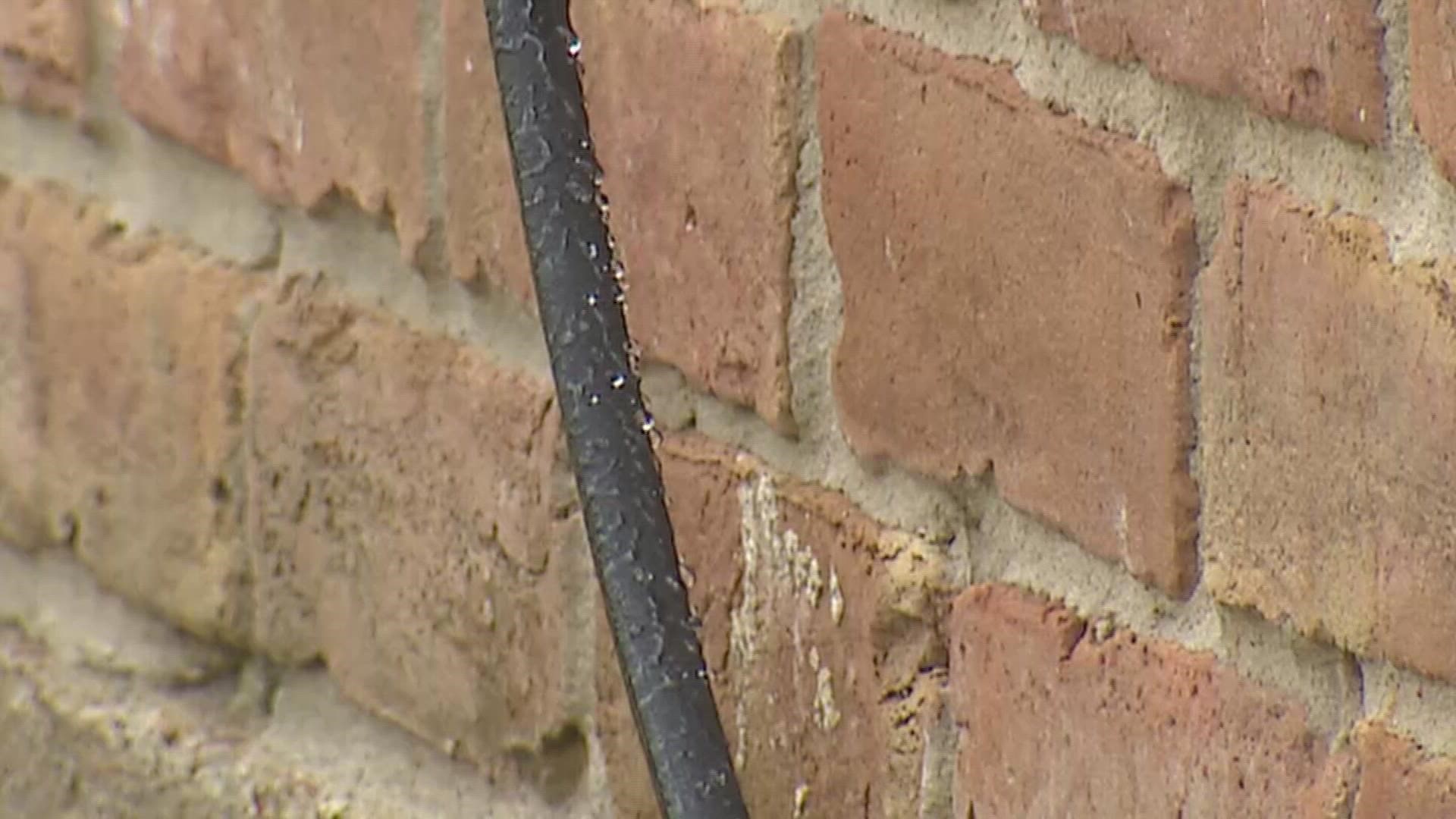HOUSTON — Our homes are vulnerable to the beating sun just as we are, so it's important you keep your home hydrated during drought conditions to prevent foundation problems.
Over time, our home's foundation starts to shift and crack due to the outside elements. As most homeowners know, this isn't good news because a broken wall may very well mean a broken wallet.
"We could be talking $1000 all the way up to $70,000 in some cases. So it really just depends, and maybe even higher," said Eric Ortiz, Leveled Concrete's sales manager.
But if you act quickly, there's no need to break the bank.
Ortiz said one of the best pieces of equipment you can use to hydrate your home is a "soaker hose."
"So this was $29 at Home Depot and you can see it's leaking out. It's not like a regular water hose so you're going to look for the term soaker hose," Ortiz said.
A soaker hose not only saves water, by using less than half of what garden hoses use per hour. But trickling water versus gushing water is better for your home, Ortiz said.
"You don't wanna just get it to a high absorption rate because it could create mud and things like that. This is a slower more controlled flow which will benefit the foundation as it goes kind of overtime," he said.
Keeping the foundation of your home even is key. The foundation under your home is protected from the sun and because of that, it keeps more moisture.
Around the home, the moisture evaporates quickly. The clay soil dries out and shrivels up. If you leave it like that, it becomes unbalanced and eventually cracks, which will need pricy repairs.
"Imagine if you were building like a Lego structure and it started to get lopsided. You would come in and add extra Legos to stabilize that and that's kind of what it is. They go under and they help stop it from slanting or falling over essentially," Ortiz explains.
Each of those repair spots costs about $1,000.
Before you think about giving your house a fresh drink of water, make sure you check with your respective city to see if your area is under a water conservation plan.
The following three cities have asked residents to conserve water due to drought conditions.

